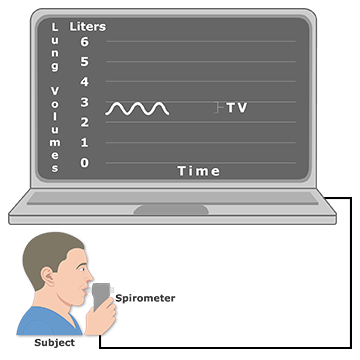

#Normal tidal volume for clin sims trial#
The long-term followup of adolescents aged 11–14 years born before 29 weeks of gestation that had been included in a randomised trial comparing the use of HFOV versus conventional ventilation immediately after birth found that those who had received HFOV had superior lung function with no evidence of poorer functional outcomes. 7,8 However, 1 out of 5 very low birth weight newborns may receive HFV at some point during their stay in the intensive care unit. There is no clear evidence that HFV offers any advantages compared to conventional ventilation when used as the initial ventilation strategy in preterm infants with respiratory distress syndrome. With the high lung volume strategy, there was a higher incidence of air leak syndrome and there was not an increased incidence of grade III or IV intraventricular haemorrhage or periventricular leukomalacia, so HFV with high lung volume does not increase the risk of neurologic morbidity. The outcomes observed in the more than 4000 infants studied in the various clinical trials comparing HFV, with a high volume strategy, and conventional mechanical ventilation, with respiratory rates of more than 60 cycles per minute and minimal tidal volumes, were similar. These discrepancies in the results are most likely due to the different therapeutic strategies used, variability in clinical practices between centres, variability in the included patients, and advances in conventional mechanical ventilation. They have failed to demonstrate significant improvements in the variables under study. The various controlled trials that have compared HFV with conventional ventilation have not had the encouraging results obtained in animal experiments. Indications Preterm newborn with respiratory distress syndrome The greatest determinant of oxygenation is the maintenance of functional residual capacity (FRC) through the CDP. Different hypotheses have been proposed: direct alveolar ventilation, the pendelluft effect, and facilitated diffusion (convection). The precise mechanism by which gas exchange takes place has yet to be elucidated. The RR is inversely correlated to tidal volume. Small changes in amplitude or lung compliance (and thus in tidal volume) have significant effects on ventilation. Tidal volume is the greatest determinant of CO 2 clearance. The elimination of CO 2 is determined by the square of the tidal volume multiplied by the RR (a concept known as DCO 2). Frequency of oscillations at the given amplitude 1 Hz = 60 cycles/min. It is responsible for alveolar ventilation. Difference in pressure above and below the CDP expressed in cmH 2O (expressed as a percentage in some ventilators). It is used for alveolar recruitment and therefore for oxygenation.Īmplitude (Δ P). It is the pressure maintained in the ventilator circuit and applied to the alveoli. Table 1 describes some of them.Ĭontinuous distending pressure of the lung (cmH 2 O) (CDP).

It is a mixed type of HFV that uses a solenoid valve that functions as a shutter, opening and closing at a high frequency.ĭifferent types of ventilators for HFV are available in Spain. High-frequency flow interruption ventilation (HFFIV). It delivers pulses of humidified gas at the level of the endotracheal tube through a jet injector. It is the type of ventilation used most frequently in our hospitals. Thus, expiration in this type of ventilation is active. The movements of the piston displace the air volume within the circuit towards the lung during inspiration, creating a positive pressure, and pull air away during expiration by generating a negative pressure.

Consist in a closed circuit that maintains a continuous positive pressure with an integrated piston pump or oscillating membrane. High-frequency oscillation ventilation (HFOV). There are 3 main types of HFV based on the devices used to deliver it 2: High-frequency ventilation was first described in 1969, 1 with positive results in the animal model. It uses very small tidal volumes (smaller than the anatomical dead space) at supraphysiological frequencies (of more than 150 breaths/min), thus maintaining adequate ventilation. High-frequency ventilation (HFV) attempts to minimise such lung injury. When tidal volumes need to be increased in order to maintain an adequate gas exchange, this produces increases in pulmonary pressures that may foster the development of bronchopulmonary dysplasia or air leaks. High-frequency ventilation General principlesĬonventional mechanical ventilation attempts to imitate spontaneous breathing by administering tidal volumes similar to physiological volumes at normal respiration rates.


 0 kommentar(er)
0 kommentar(er)
